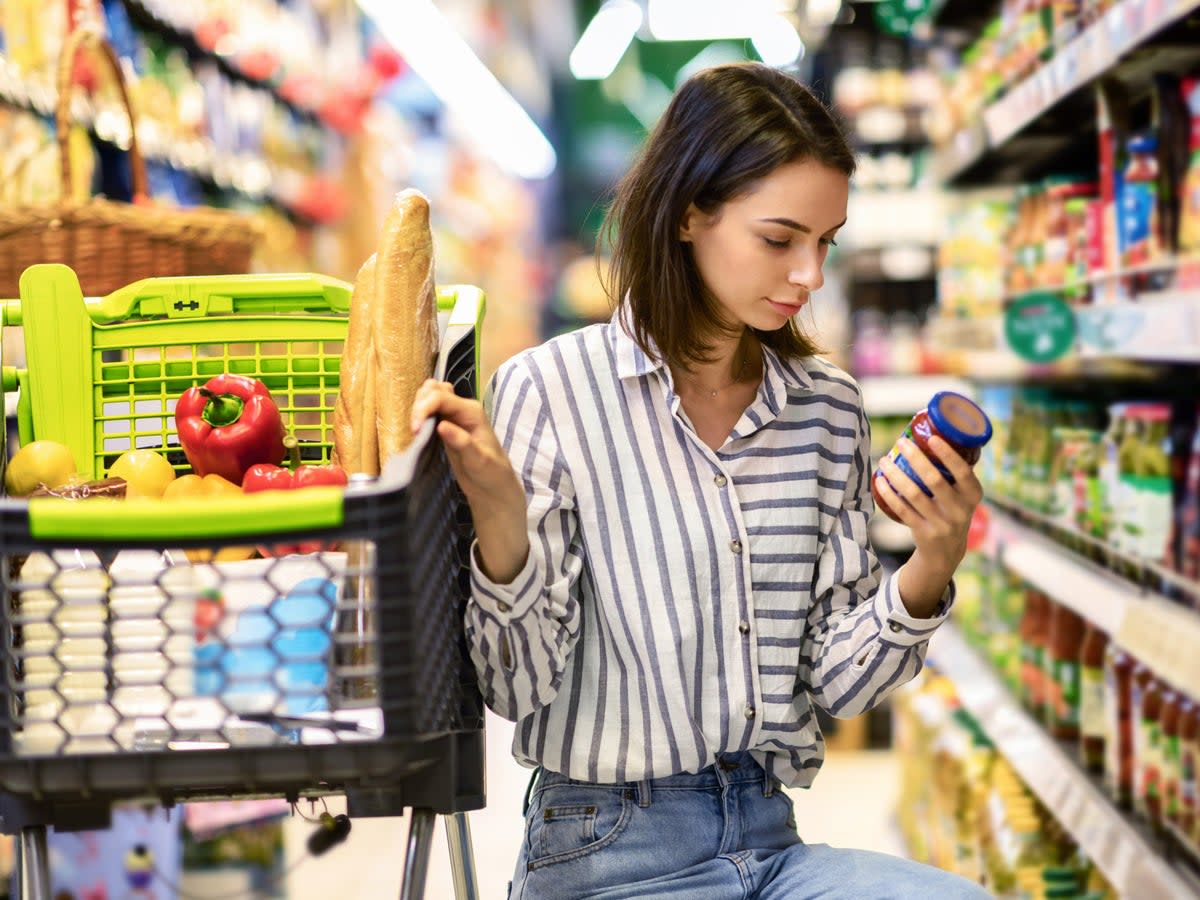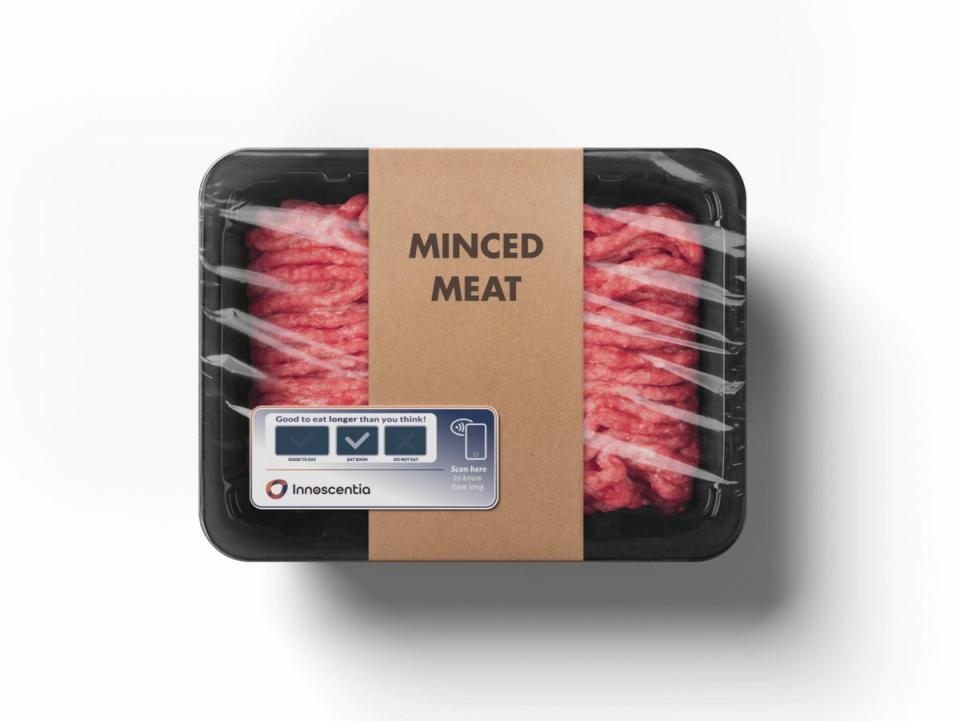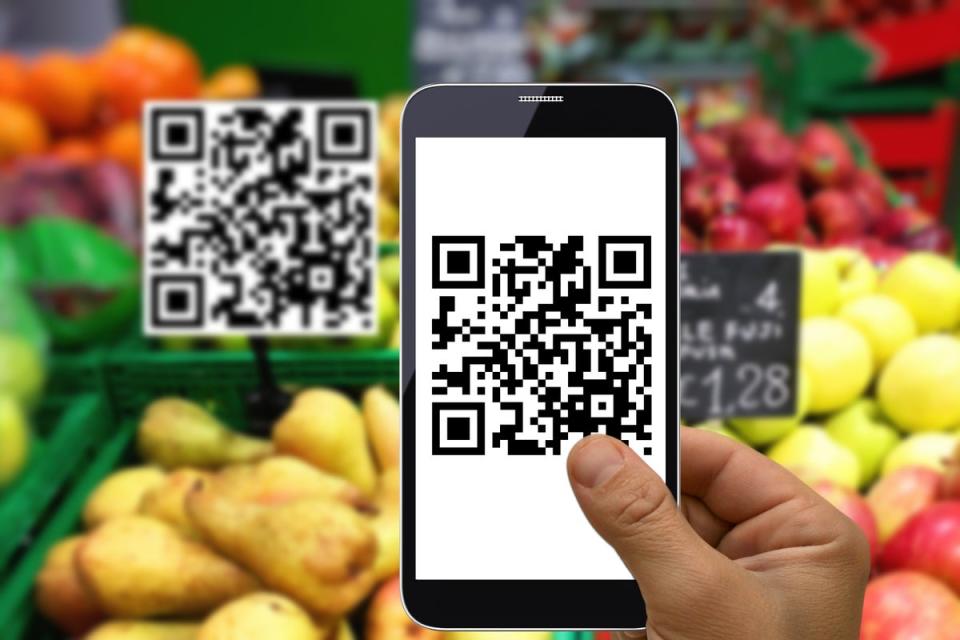Scrap sell-by dates – and say hello to the revolutionary smart food packaging of the future

Picture the scene. You’re in the supermarket to grab some essentials: milk, bread, chicken, veg. You pick up each item, and instead of an expiry date, there’s simply a green tick or red cross. Green for good, red for bad. You head home and check the app connected to your fridge, which tells you which items have gone off and which are still fine to eat. Something looks questionable; you take a quick snap on your phone, using an AI filter to analyse the texture and determine whether you should risk it. This could well be the future – a system in which technology is used to prevent food poisoning outbreaks and save the vast glut of waste blighting the modern world.
Professor Tohid Didar is one of the pioneers in the smart packaging vanguard, developing sci-fi-sounding tech as part of a team based at Canada’s McMaster University.
“I think there’s absolutely no choice but to start using this kind of technology with the amount of food waste and food insecurity we have at the moment – there are a lot of people suffering,” he says.
Previously working in biomedical tech, Professor Didar pivoted to packaging in 2017 in response to frequent outbreaks of E coli and salmonella across Canada, which kill around 4,000 people per year. Every time an outbreak happened, the entire stock at the facility where the contaminated food was packaged had to be recalled and tossed out. Huge amounts of uncontaminated food were wasted. “We started asking: what if there was a system that identified pathogens in each individual package?” he says. “I started learning more about food. We looked at whether you could embed sensors into packaging that would give a signal when E coli or salmonella were present.” Using markers like a food’s PH and utilising various chemicals, they developed a system that could do just that.
But the team quickly realised there could be much wider applications to so-called “smart” packaging – namely, replacing the current analogue “best-before” or “sell-by” dates with something non-static and far more accurate. “We saw that contamination was one issue – but an even bigger one was food spoilage.”
He gives the example of going shopping and seeing a milk carton that the label tells you will expire the following day. You naturally leave it on the shelf, and go rummaging behind it for a carton with a later expiry date. The original milk goes unpurchased; the store has no choice but to throw it away, despite the fact it might still be perfectly drinkable for days to come. “How much food and drink is wasted that’s still good?”, he asks. The answer, in Canada, is C$40bn (£23bn)-worth every year. Worldwide, nearly one-third of all food produced for human consumption is wasted or lost annually, amounting to about 1.3 billion tonnes – enough to feed 2 billion people, or the entire population of the US 10 times over.
Professor Didar’s team decided to develop systems featuring a “good” or “bad” marker on packaging instead – either you can eat it, or you can’t. Studies they’ve done around expiration dates have shown that the dates are often inaccurate, with meat in particular still safe to consume for far longer than advertised on the traditional sell-by date labelling. Expiration dates are currently set very conservatively to be on the safe side, for obvious reasons (potential lawsuits if you accidentally poison someone being primary among them).

McMaster’s engineers and biochemists have even gone a step further. What if, they asked themselves, there was something in the packaging itself that would not only detect food spoilage but halt it, extending the product’s shelf-life? They discovered that “good viruses”, called bacteriophages or phages, could be used to kill “bad” bacteria and pathogens, the kind that make us sick or cause food to go off. It’s particularly clever given the recent backlash against antibiotics which, while effective, also destroy a lot of good bacteria in the body, disrupting the natural balance of our gut. According to Professor Didar, phages are much more targeted.
So far, the team has invented and developed four types of smart packaging: Sentinel Wrap, a plastic wrapping that can detect and visibly signal when its contents have gone bad; a handheld test that produces real-time results, allowing wholesalers and retailers using special readers to detect, isolate and withdraw specific spoiled goods before they can be sold (avoiding unnecessary widespread recalls); lab-on-a-package, a tiny, self-activating test incorporated into a tray of fish or meat, which visually indicates when a product has gone bad; and finally a sprayable, food-safe gel composed of organic bacteriophages that eliminate the harmful bacteria behind food contamination.
And they aren’t the only ones working on smart technology in the food industry. Ynvisible, also based in Canada, has developed smart labels to give accurate real-time information on food’s freshness and safety that knock “analogue” labels into a cocked hat. Combining thin and flexible e-paper displays with various sensors, the smart labels offer “a highly effective way to ensure product quality and safety of perishable food and pharmaceuticals”, says the company’s CEO, Ramin Heydarpour. Where McMaster’s scientists have used chemicals, Ynvisible mainly uses microelectronics to monitor indicators like temperature and humidity, and gas sensors to detect food spoilage.
Worldwide, nearly one third of all food produced for human consumption is wasted or lost annually
“The traditional ‘expiry date’ system has tremendous inefficiencies and continuing to use this system has negative impacts at many levels: environmentally, economically and health-related,” argues Heydarpour. “Developing technology for a more accurate shelf-life determination can in fact help all actors in the food value chain reduce their influence on one of the most pressing current climate issues – food waste.”
Here in the UK, there’s Oli Tec, which has developed an intelligent time and temperature label. Using a scale of amber to red, the label gradually transitions between colours to clearly indicate an item’s freshness. The process slows down in cool temperatures and speeds up in warmer ones; according to the company, this “simple colour-changing indicator provides a clear, highly visible call to action that both retailers and consumers can understand at a glance”. Nik Richardson, chief executive of Oli Tec, said they’d developed the labels to reduce waste.
From a layman’s perspective, it seems a no-brainer for food producers to sign up to this revolutionary tech. From avoiding the reputational and practical costs associated with food poisoning epidemics to the dramatic potential reduction in food waste, the benefits are huge. In a paper published by the Nature Reviews Bioengineering journal last month, Professor Didar’s team explained how utilising the products they’ve developed would literally save tens of billions of dollars a year, especially when factoring in the healthcare and lost-time costs associated with E coli and salmonella outbreaks.

But, as always, it comes down to the bottom line. “Producers don’t even want a penny added to the cost of packaging,” laments Professor Didar. The chemicals he and his team are using are inexpensive; they’ve optimised their packaging so that it wouldn’t add more than 10 to 20 cents per product. But even that is currently deemed too high in the current market, where food-flation has hit consumers hard the world over. “To me it doesn’t seem like a significant amount, but producers don’t want to add anything to the price,” he adds.
Ynvisible’s system is pricier per unit due to the use of electronics – in the region of 50 cents to $3-5 per label at present (though this would be hugely reduced if the process was scaled up, the company says). “This is the main barrier to entry for smart labels in this space,” says Heydarpour. “The cost of smart labels is considerably higher than analogue labels. In the long run, they are, however, a much more sustainable approach and can significantly contribute to minimising the impact of a serious environmental problem.”
Professor Didar agrees that this is what we need to focus on; in the era of sustainability, it’s not just about the economic return on investment, but the social and environmental ramifications. All three are equally important in the pyramid, he argues, adding: “We need to raise awareness, and for everyone to come together to push for the development of technology that yes, will add a couple of pennies onto each food product, but will prevent huge waste.”
Producers don’t even want a penny added to the cost of packaging
Professor Tohid Didar
Until the smart packaging and labelling of the future goes mainstream, there are other, more analogue companies trying to reduce food waste. For the last 15 years, online retailer Approved Food has been dedicated to fighting waste by selling food, drink and other items which are just past their best-before date (but are still completely safe to consume) or have been discontinued due to damaged or updated packaging. To date, the company has shipped over 1.25 million orders and rescued more than 25,000 tonnes of perfectly edible food and drink from going to landfill – equivalent to almost 60 million meals.
Then there are apps like Too Good To Go, linking up customers with restaurants and stores that have surplus unsold food that can be purchased at a discount, and Olio, where people can offer spare or unwanted food to others in their local area instead of binning it.
And, in our own small way, we as individuals can aim to reduce waste as much as possible by being mindful about what we buy, using up leftovers, and freezing or giving away what we can’t eat. It might not be smart packaging, but it’s still smart.


